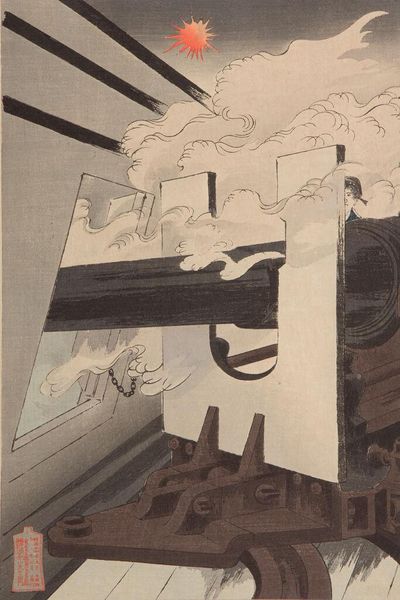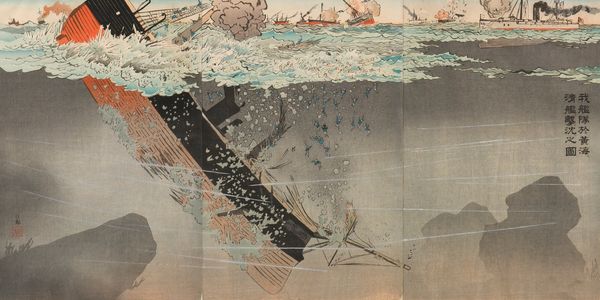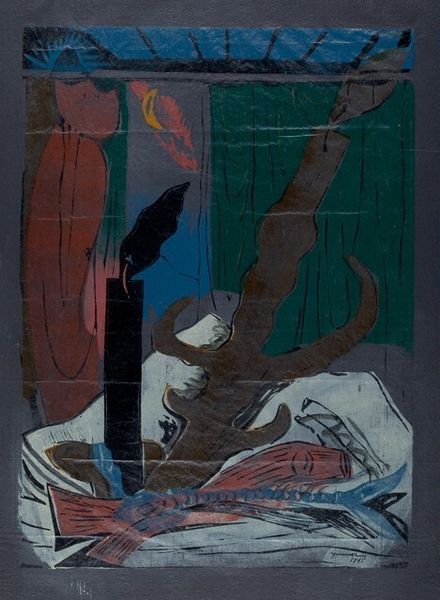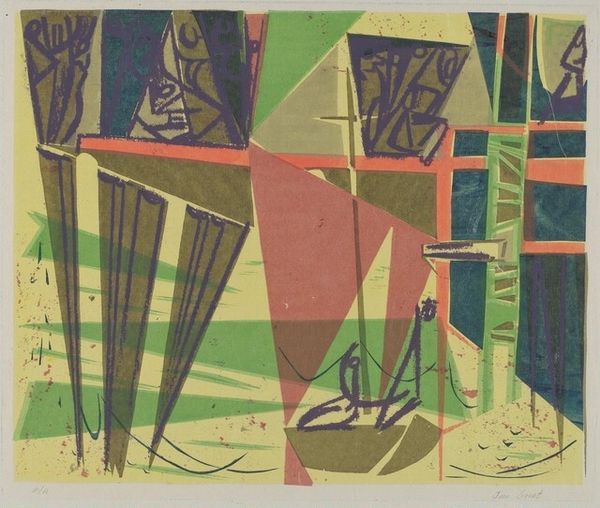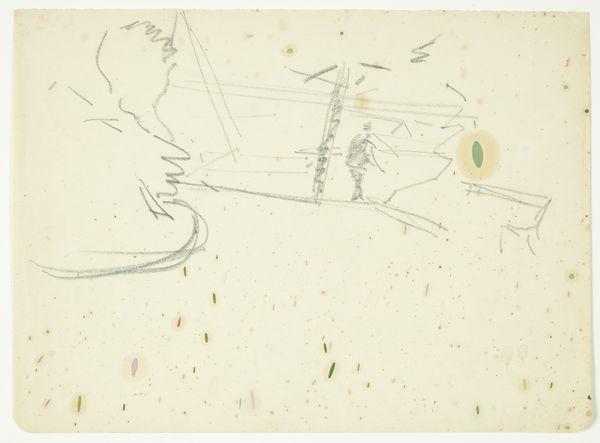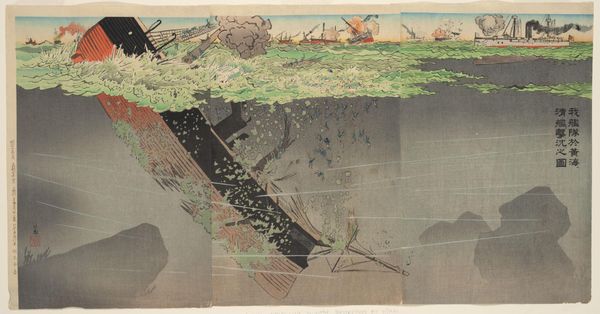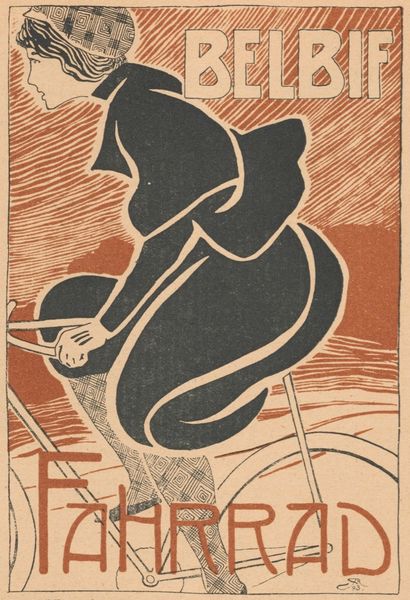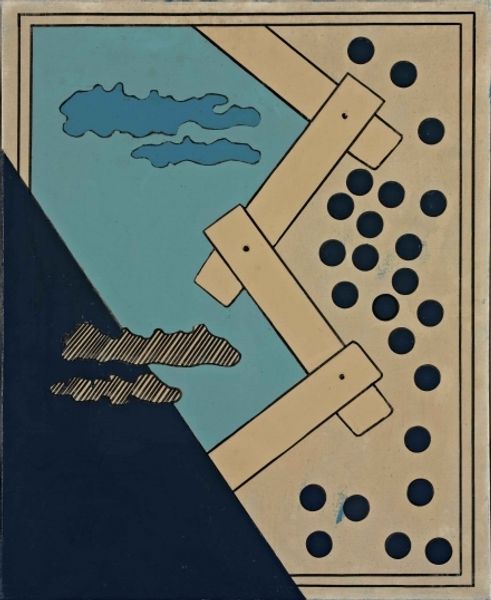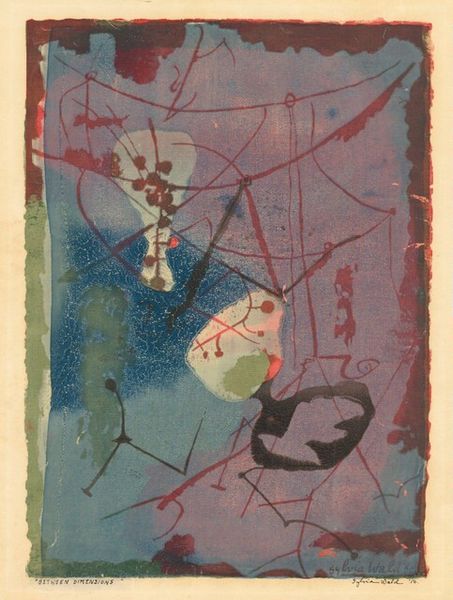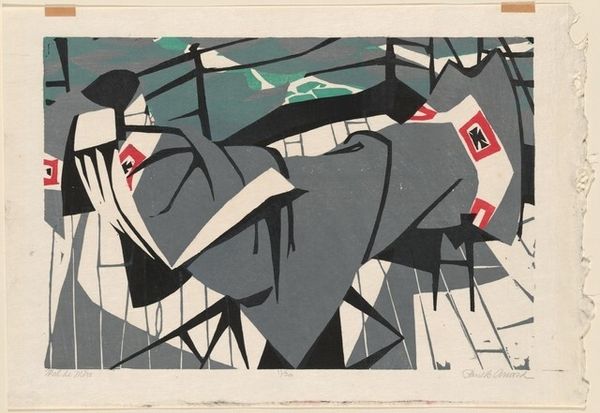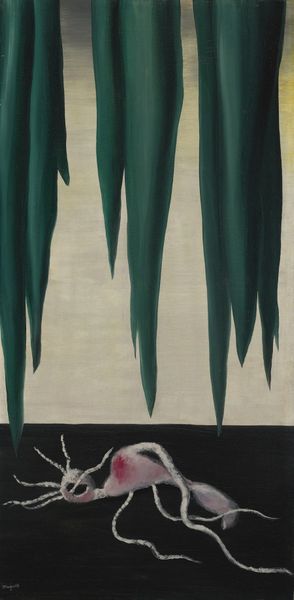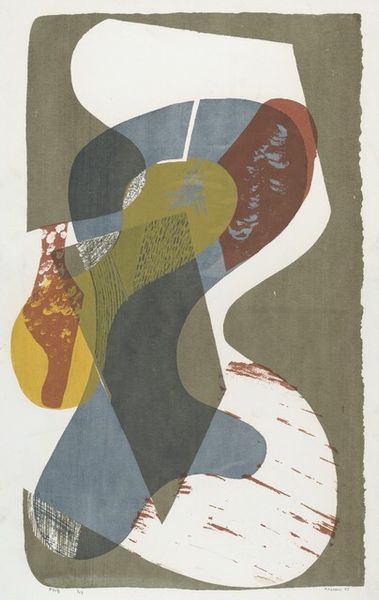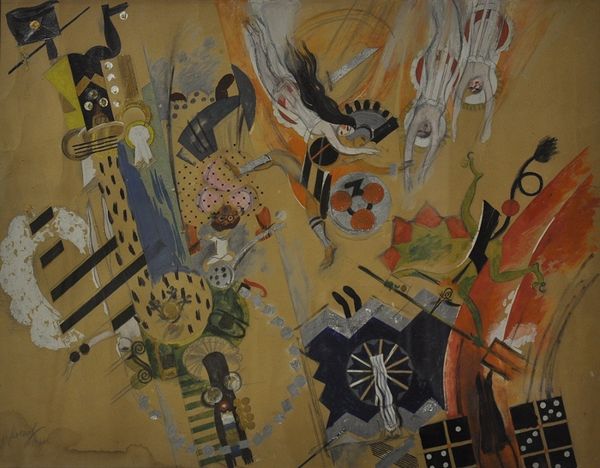
painting, oil-paint
#
painting
#
oil-paint
#
harlem-renaissance
#
figuration
#
oil painting
#
genre-painting
#
modernism
Copyright: Jacob Lawrence,Fair Use
Curator: There's something deeply affecting about this painting. It's dark, cramped, yet full of movement. The color palette is also surprisingly subdued. Editor: Indeed. What you’re observing is Jacob Lawrence's "Pool Parlor," crafted in 1942, now residing here at The Met. The painting offers a complex look into social dynamics. Curator: Looking closer, the composition is quite brilliant. Lawrence stacks the pool tables, one atop the other, creating a compressed sense of space, filled with implied narrative possibilities. It's almost cubist in its flattening. Editor: And painted with oil on canvas. The oil allows Lawrence to build layers, constructing a social space where work, leisure, and class intermingle, using visible brushstrokes which hint at the process and physical labor embedded in its creation. It reveals the materials and how they come together to illustrate work in a community context. Curator: I notice how he plays with geometry, simplifying human forms into strong, angular shapes. It’s as if he's more concerned with the arrangement of planes and the movement created by the pool cues. The planes overlap in the construction to create dynamic relationships among the players. Editor: Right. I find myself pondering the work's place within the Harlem Renaissance and Modernism, and its relation to labor; How this artwork, produced in New York, becomes a commentary on black social life during war, through something as ubiquitous and accessible as oil paint. The cost, the craft, the skill... it all has social resonance. Curator: It's that flattened perspective that interests me. He sacrifices depth, really disrupting traditional notions of space. By focusing on the planes he's accentuating two-dimensionality. It gives the piece this feeling of being a puzzle—a collection of interlinked forms and tones. Editor: Well, for me, reflecting on these paintings, reminds me of the inherent connections between material realities, social identity, and historical narrative; these pieces underscore the relationship between artwork, audience, and economic systems. Curator: Yes, this deep dive into form allowed us to reflect on art and history! Editor: Indeed! We can consider it to gain new social and material insights, and, really, what more can one ask?
Comments
No comments
Be the first to comment and join the conversation on the ultimate creative platform.

